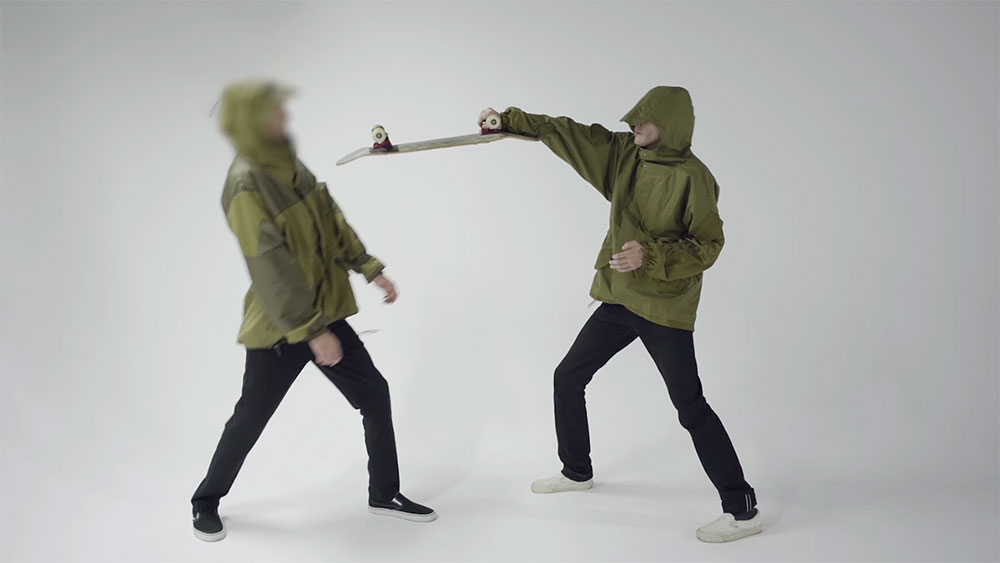To mark the final week of Kirill Savchenkov’s exhibition Museum of Skateboarding at Calvert 22, we’re thinking not only about how a board can change your relationship with the city you live in but also the places you travel to. We caught up with skater and globetrotter Patrik Wallner, whose documentaries will make you want to never travel without a skateboard again
How far can a skateboard take you? Filmmaker Patrik Wallner’s entire career has revolved around this question, taking him on countless adventures from travelling the Silk Road to island hopping in Sri Lanka, and celebrating Kim II-Sung’s birthday in North Korea. His shorts build on the already successful formula of the skate documentary and have featured global skating legends. In true skater style, Wallner has managed to turn the genre on its head, using his films as a platform to illuminate places on the Eurasian continent you wouldn’t think of visiting, let alone skating. These skating-films-cum-travelogues have caught the attention of major brands like Converse and Red Bull though in Wallner’s eyes, he’s doing the same thing as when he first started shooting his friends skating aged 14 and 15 only, in his words, “with different cameras and a bit more pixels along the way”.
“It’s not just about skating a kerb in Eastern Europe or in Central Asia but asking how was the train ride there, how were the people?”
Wallner’s background has much to do with his overriding appetite for travel. “I’m a bit of a world citizen,” he confesses. Born in Germany to Hungarian parents, then living in America and later Asia, he picked up a camera at an early age. But it wasn’t until he and his friends started skating that he realised he wanted to take filmmaking seriously. “My mum already had a camera, so I had it in my hands through my childhood. Once I started skateboarding it naturally became a thing to record and document your friends doing various tricks. It slowly morphed into something a bit bigger,” the director reflects.
He originally began making films out of his own pocket, selling them as DVDs. The first serious trip he made for a documentary, from Moscow to Hong-Kong, was also his longest, traversing Russia, Mongolia, Siberia, Central and Eastern China. “It was mid-July when we started, and we didn’t arrive in Hong-Kong till mid-September.” Wallner’s travel companions included pro skateboards such as John Tanner, Dan Zvereff, Danny Hochman, Dan Cates, Laurence Keefe, and Michael Mackrodt - figures who’ve since reappeared in Wallner’s others films.
And these aren’t just any professional skateboarders, Wallner works with some of the most creative in the industry. We see the guys skate to the backdrop of the futuristic towers in Almaty in Kazakhstan, fly down the hills of Khabarovsk in Russia, and even, in the case of Latvian skater-stuntman Madars Apse, pole jump over an abandoned Moskvich car in Georgia. “For most of the skate documentaries that we do, I pick a location, then we just indulge and see what happens. Sometimes we’re fortunate enough to have guides and fixers and local skaters who know the spots already but most of the time, we skate through the streets. We’re all on our boards so it doesn’t take too long to cross over the city to find various spots,” Wallner says.
The Soviet Union was once a no-go area for skateboards, like anything else associated with the West. Today the public reaction is changing rapidly and for the most part, it’s the older generations that Wallner and his skaters experience the most backlash from. “There have been times where we’ve skated monuments like one time in Vladivostok when people got really patriotic and said ‘How dare you skate on our statue?’. We skated the base of it that was already pretty destroyed. Most of the time if we explain what we’re trying to do, that we came all the way here to skate this monument or statue then they understand,” Wallner explains. “There are definitely big no-no’s,” he adds. “In Turkmenistan I was on a trip by myself because I couldn’t get any other skaters to join. I was in your average travel group and brought my board to see if there was potentially to come back for another skate trip. The whole capital, Ashgabat, was decorated by president Gurbanguly Berdimuhamedow in white marble so skateboarding has no place there. I tried to skate a little bit and you were told to get off your board and walk.”
“A taxi driver in Mongolia tried to kill us or, I’m assuming, do some damage with a crowbar”
Though there are places where bringing a skateboard can potentially ruin the trip, Wallner’s most frustrating trips aren’t the ones you might expect. “It’s when it’s too forced, when we go to the Maldives to film a skate documentary and I just want to be here with my girlfriend but instead I’m here with eight guys filming in a random street and getting all dirty and not seeing the main attractions of the island,” he laughs. “I always enjoy it, first of all for transportation it’s quite fast. You can get around faster. Equally, you can break the ice faster with the people. Just having a skateboard with you will draw a little bit of attention and people enjoy looking at it especially in places where they don’t see it. It’s a good tool to have a little bit of small talk with someone.”
Though we see the skaters do various tricks over hand-rails and ledges, the films also show the guys embarking on a three-day train across Kazakhstan to the Aral Sea or ride a rusty cable car in Georgia. This is where Wallner stands out from many of his peers, for his desire to engage both the skaters and the non-skater audience. “It’s not just about skating a kerb in Eastern Europe or in Central Asia but asking how was the train ride there, how were the people and what is the language about? Just something more educational,” he says.
In fact, it’s times when the skaters are off their boards that they run into the most trouble. “I have a theory that the more North you go on Earth, the more pissed off the taxi drivers are,” Wallner laughs. Recounting his very first trip, he describes an incident with one diver: “We were staying in this random hotel in Yekaterinburg. We needed three taxis but the driver said he would take us there himself. When another taxi stopped he punched the other driver in the face. We started to go and he started chasing us down. A taxi driver in Mongolia tried to kill us or, I’m assuming, do some damage with a crowbar, after following Michael Mackrodt and Danny Hochman down an alley.”
“I think without a skateboard I wouldn’t have gone to a lot of places that I’ve been to”
For the next year, the 29-year-old has a lot more trips ahead of him. There’s a lot of uncharted terrain he has not been able to visit, such as the breakaway states of Abkhazia and South Ossetia, as well as the Middle East. He’s currently working on a photo book, collecting one photo of each country across Eurasia, something he plans on finishing before he turns 30. The emphasis here is less on skating and more on landscape, culture and religion but he still credits his skateboard for carrying him this far: “I think without a skateboard I wouldn’t have gone to a lot of places that I’ve been to because I don’t think I would have had an interest to see it at all. If I randomly find a Google image of a three stair ledge with a huge statue in the background, I usually go there to check it out. It has definitely broadened my horizon on geopolitics around the world. I’ve been to North Korea four times now. I don’t think too many people go more than once. They opened up a skatepark recently too. Just the excitement to see if I can find any more spots, it motivates you to keep going and to keep searching. It’s almost like you want to find this perfect spot, that’s still out there somewhere.”
Text: Liza Premiyak
Image: Stills by Patrik Wallner














